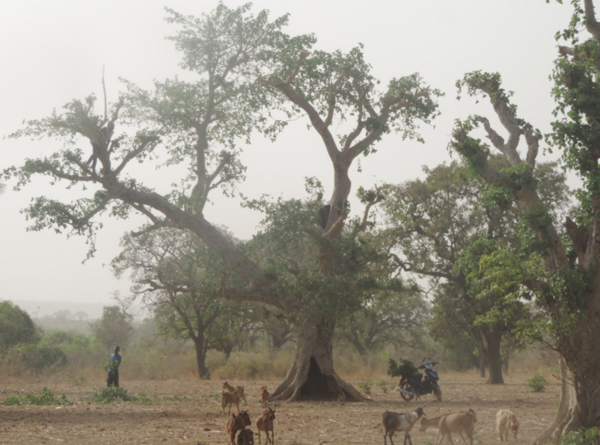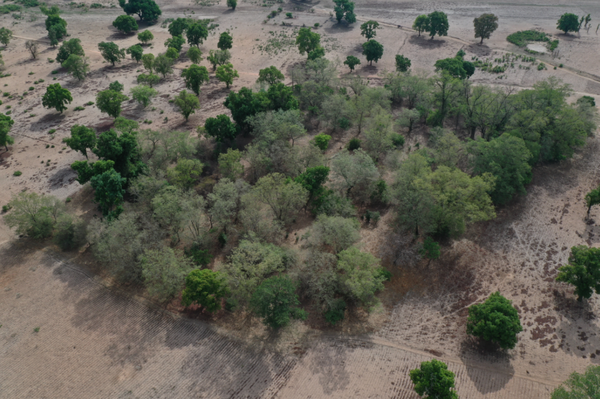Diagnosis of the mode of management of the woody biomass
The management practices of woody biomass on plots under cultivation can be summarized as burning practiced by nearly 70% of producers, followed by the practice of mulching with 20% of farms. Off-plot deposition (OPD) of woody biomass is practiced by 10% of producers.
Determination of the effect of woody plants on grain yield
The study of the effect of agroforestry parks on crop yields shows that the position of crops, type and architecture of woody plants have an influence on the growth and yield of cereals. Cereal crops outside the shea tree canopy gave higher panicle and grain yields than those under the canopy, and the grain yield increase for millet was 49%. However, for roast and jujube, the crown had no influence on grain crops.
Grain yield of sorghum was significantly influenced (P=0.01) by woody density. It is observed that a high density of woody plants (N>15) induces a significant increase in grain yield of 800 kg ha-1 compared to a low density (N<10) with a grain yield of 500 kg ha-1.
Inventory of woody species on family farms
The woody species present in the area are by order of magnitude Vitellaria paradoxa (65%) and Borassus aethiopum (16%) which are the two dominant species. In addition to these two, others are present at a rate of less than 5%. We can mention: Adansonia digitata; Lannea microcarpa; Ficus gnaphalocarpa; Guiera senegalensis; Ziziphus mauritiana etc...
Written by: Dr. Aliou Badara Kouyaté, teacher and researcher at Rural Polytechnic Institute of Training and Applied Research (IPR/IFRA).




 tap and then scroll down to the Add to Home Screen command.
tap and then scroll down to the Add to Home Screen command.